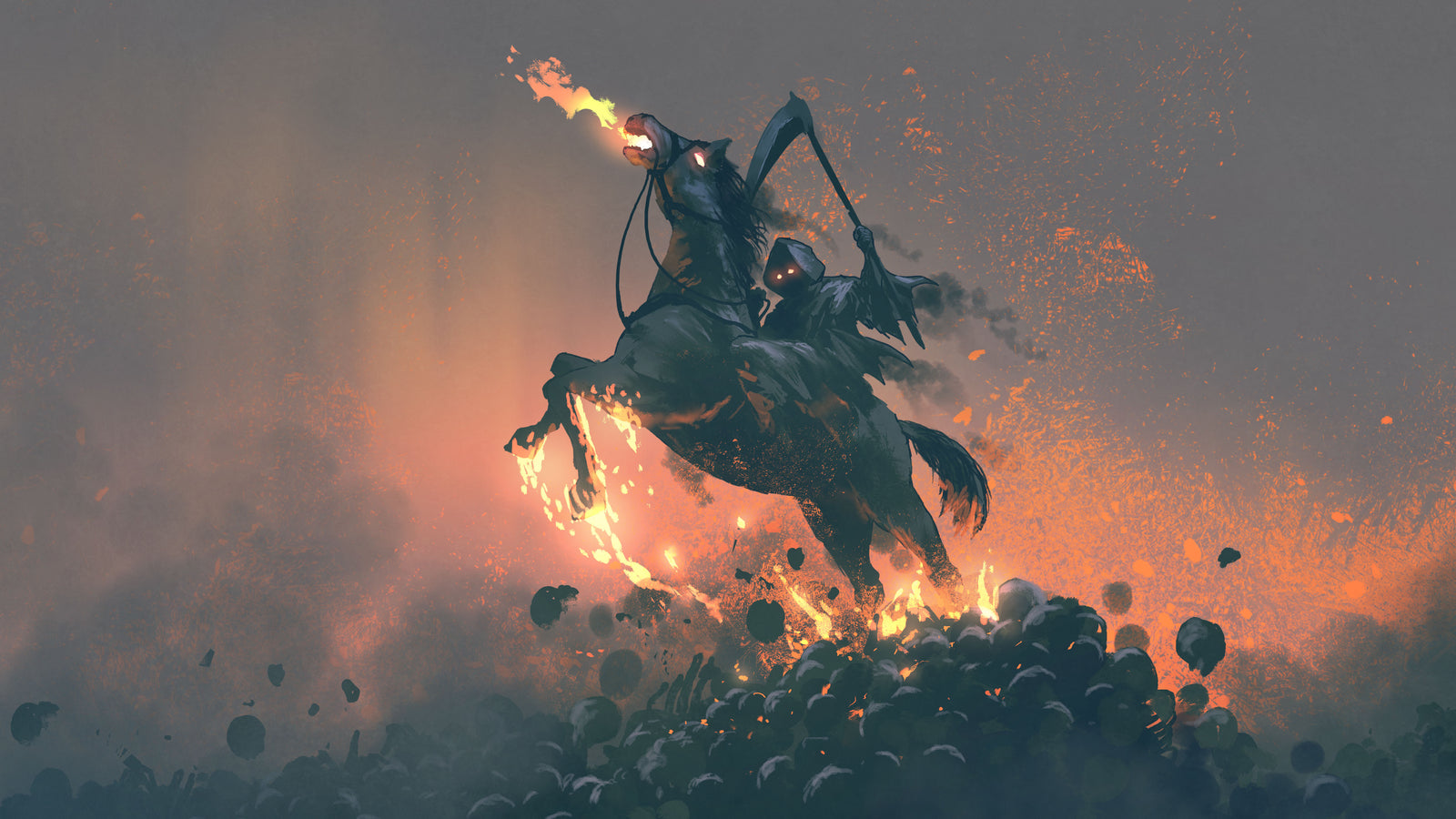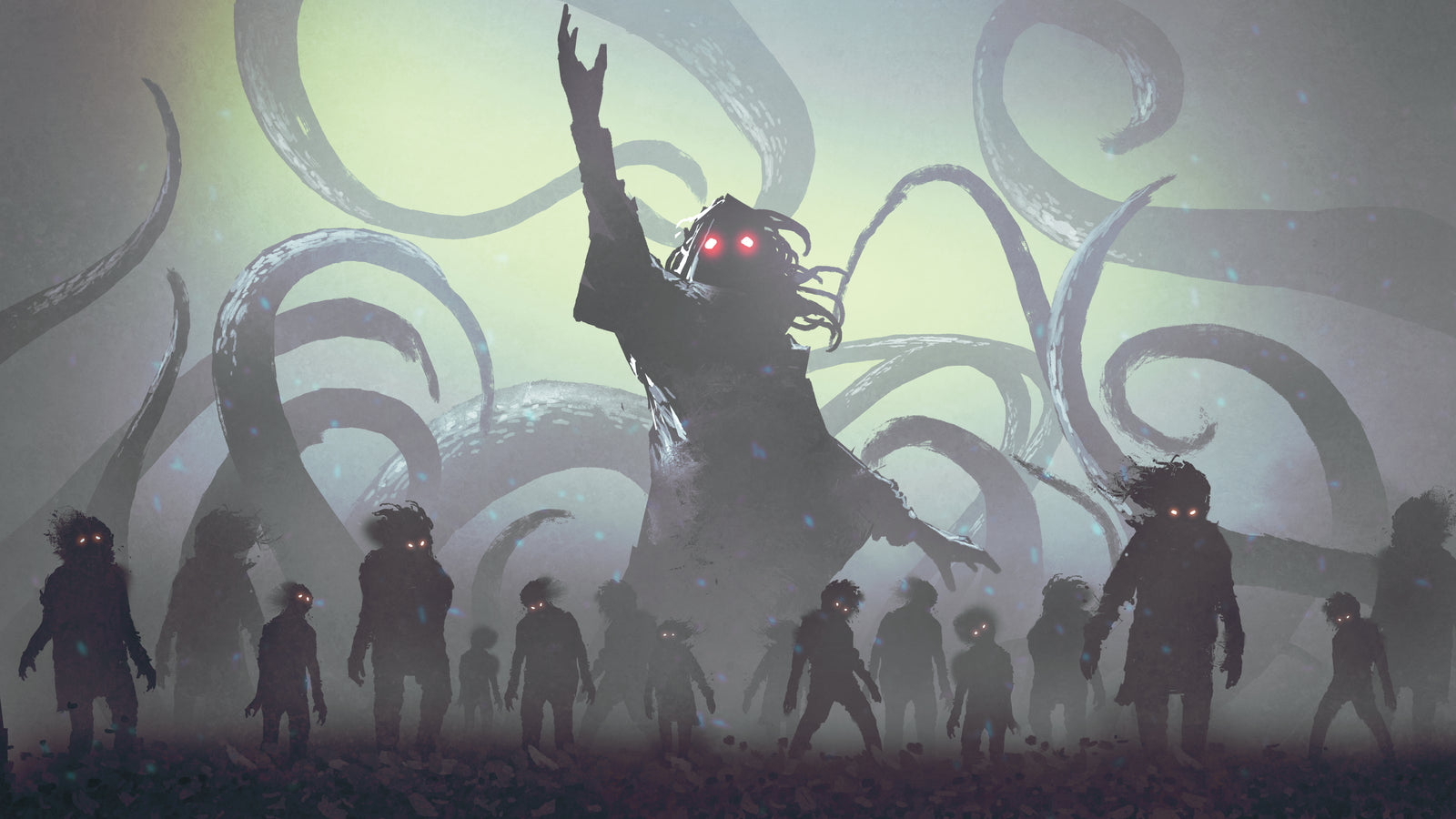Your Cart is Empty

The Secret to Exciting D&D Encounters
March 02, 2021 2 min read
Tension! The driving force behind some of the best scenes in film, comics, novels — you name it. Tension is what keeps us on the edge of our seats waiting to find out what happens.
For example, a great source of tension in my life during the first season of The Mandalorian was wondering whether Baby Yoda would survive yet another kidnapping attempt.
If you're like me, you were glued to The Mandalorian each week making sure our precious, broth-sipping meme of the year wasn't coming to any harm.
And this is a powerful effect we can put to use in our D&D games. Tension comes from questions we ask ourselves about what will happen. In screenwriting and theater, these are referred to as dramatic questions. "Will baby Yoda survive? Will Wonder Woman put an end to WWI? Will I have any cavities this time around at the dentist?"
When you're designing an encounter, you can make sure there's tension by setting up a clear dramatic question.
Once you know it, you'll know what's exciting about the encounter. You'll also know when the encounter's tension is over so you don't get stuck in a dead scene!
So, how do you sort out the dramatic question of an encounter? First, determine what will cause the danger/risk of the encounter to end. Then, turn that into a question that can be answered with a "yes" or "no."
For example, let's say the Mandalorian needs to make it through curtains of enemy blaster fire to the safety of his ship. What will end the danger? If he escapes to his ship in one piece. So the dramatic question is, "Will the Mandalorian safely escape to his ship?"
Some dramatic questions are just that simple. But there are many cases where the dramatic question is much more than it seems, too.
Take a boss battle, for example. Amid the fighting and spell slinging, the villain is trying to place the Iron Crown of Nadian on the Apocalyptic Altar of Entropy to unleash madness upon the mortal world.
Even though this is a combat, the dramatic question isn't, "Can the characters kill the villain?" The thing that has everyone on the edge of their seats is actually this: "Can the characters stop the villain from placing the crown on the altar?"
If the characters stop the villain from placing the crown on the altar, whether by stealing it or tossing her inside a portable hole, then the tension is suddenly gone. The dramatic question is answered!
That means it's time to move toward the next scene rather than linger in an encounter that is no longer very dramatic (and wasn't even about fighting to the death, as it turns out).
If you can recognize tension and know when it's over, then you'll have great command over pacing and excitement.
Next time you scream in fear over Baby Yoda's safety (am I the only one who does that?), ask yourself: What's the dramatic question here?
When you do that, you'll see exactly what's behind all the thrilling tension.
Join The Arcane Library's newsletter for a free 1st-level adventure, plus more articles like this one!
Header art © Dean Spencer, used with permission / drivethrurpg.com
Also in Arcane Articles

How To Design Exciting D&D Encounters
November 08, 2022 6 min read
Encounters are one of the most important parts of Dungeons & Dragons. So how do we make sure we're designing good ones?
Read More
How to Write A D&D Adventure: The Complete Guide
October 21, 2021 14 min read 6 Comments
So you want to write a 5E D&D adventure? Read on for the step-by-step process I've developed over the years for writing an action-packed D&D adventure with as little friction as possible.
Read More
Imagine First, Design Second
May 05, 2021 4 min read 7 Comments
Sometimes, I write a dud. Here's the story of how I recently wrote an adventure that went nowhere, and how I managed to learn something useful from the whole experience in the end.
Read More
